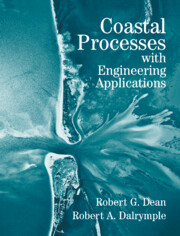3 - Long-Term Processes
Published online by Cambridge University Press: 29 May 2010
Summary
Natural and anthropogenic effects combine to result in the maximum erosional stress on the barrier islands located near the mouth of the Mississippi River. These islands include Grand Isle, Timbalier, and Isle Dernieres to the west of the active delta and the Chandeleur Islands to the east. Natural effects include the subsidence resulting from the weight of the delta and the soft unconsolidated underlying muds. However, in this instance, the anthropogenic effects probably dominate and include additional subsidence resulting from withdrawal of hydrocarbons and the reduction of sediment supply from the river by the construction of upstream impoundments and jetties that direct the riverine sediment offshore to deep water. Additionally, in some areas, inlets and jetties have disturbed local sediment transport pathways. The total relative rise in sea level in the region of the Mississippi River Delta is on the order of 1 cm per year – eight times the worldwide rate. The resulting erosion rate from the combined effects is so great that entire islands can move and vanish within periods of decades. See, for example, Nummedal and Cuomo (1984) for an historical perspective on some of this erosion.
INTRODUCTION
The processes that shape shorelines can be examined with many different time scales. The beach changes constantly under the action of the individual waves that suspend the beach sediment and move it about; however, it is the erosion on the scale of hours and days that is responsible for the cumulative damage by a storm.
- Type
- Chapter
- Information
- Coastal Processes with Engineering Applications , pp. 35 - 70Publisher: Cambridge University PressPrint publication year: 2001



